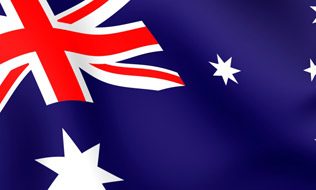

While defined contribution plan members want to know they’ll have stable income through retirement with flexibility around accessing their funds, the Canadian market needs to evolve to include a broader range of retirement products to accommodate that.
According to a Mercer survey of 1,000 Australians over the age of 55, DC plan members most want an assurance that they won’t run out of money before they die, a stable level of income throughout their retirement and the ability to access their retirement savings when they need or want to.
While Canada’s DC market is evolving, most plans don’t offer options that provide retirees with both stability and flexibility, noted two Mercer consultants in a presentation at the organization’s Global Investment Forum in Toronto last week. The event looked at lessons for the Canadian DC world from Australia, one of the world’s most advanced DC markets.
Read: Regulators turning their attention to DC plan rules
“In Canada we are coming from a long legacy of defined benefit pension arrangements, where there’s this idea that even though we’re switching to defined contribution type arrangements we need to include defined benefit features for retirement products like annuities and lots of paternalism around protection of employees by the employer,” says Jillian Kennedy, leader of DC and financial wellness at Mercer Canada and one of the presenters.
“One thing we can learn from the Australian marketplace is . . . when people go into retirement there’s still this idea of diversifying your product based on your lifestyle and goals in retirement. One product alone would not be able to achieve that.”
The Canadian market is starting to evolve to recognize that employees should have a more diversified product offering for plan members at retirement, says Kennedy. “Just an annuity is not going to meet the trilemma of needs. Having more payout products, having a basket of products that might accommodate an individual is a new concept for the Canadian market.”
Read: Budget 2019: Proposed changes to pension legislation, annuities, CPP
David Knox, senior actuary and national leader of research and policy for Mercer Australia and another presenter, says the Australian market is developing a solution that would allow retirees to put some of their retirement income into a “protection” account and the rest into a drawdown account. “You gradually draw down the flex product while you have your cognitive ability, and in your 80s or 90s you have the longevity protection coming in, whether that’s a deferred annuity or some other product,” says Knox.
Notably, Canada’s 2019 federal budget included a proposal to amend the Income Tax Act to allow for an advanced life deferred annuity, which would provide retirees with a guaranteed annual income that kicks in at age 85.
Knox says the Australian market is trying to balance retirees’ need to maintain their established standard of living with an understanding that their spending changes at different stages of retirement as they move from being active and traveling to starting to slow down. “As you go through retirement, your expenditure needs change,” he says. “But there is also this desire to have this rainy day fund” for unexpected health expenses in the later years of life, such as a home renovation to accommodate accessibility needs.
Canada, on the other hand, has a different challenge, according to Kennedy. “The average Canadian is terrified of drawing down their money. The issue with Canada isn’t planning out this access to money at different times in their life, but there’s this fear instilled into them that their money will run out, so they don’t use it. They end up getting to their frail stage and have all this money left over that they absolutely won’t be able to use.”
Read: How are different countries tackling decumulation?
Kennedy speculates this is connected to Canada’s transition from a DB to DC environment. In DB arrangements, employees didn’t need to think about their retirement income, she says, but the transfer of risk to the employee “has instilled fear within the individual that because you’re now you’re on the hook for this, you’re probably not going to do it right.”
She says that’s terrifying, because it means Canadian plan sponsors aren’t educating and supporting their plan members once they’re in retirement. “[In] our marketplace, we’re talking about getting people to transition to retirement, but then what happens 10 years later? It . . . could turn into a crisis, with tons and tons of money and individuals not spending it.”
Australian plan members can be similarly conservative in their retirement spending, notes Knox. “On death, an average of about third of the money is still there, which means it hasn’t been used,” he says. The country’s largest pension fund, the Australian Superannuation Fund, has responded by setting their default products at a drawdown of six per cent per year. “The grounds are that, ‘Well, we want you to use your money.’”
